Herb-Crusted Prime Rib
4.8
(22)
Your folders
Your folders
Prep Time: 20 minutes
Cook Time: 1 hours, 45 minutes
Total: 2 hours, 5 minutes
Servings: 8
Author : Lindsay D. Mattison
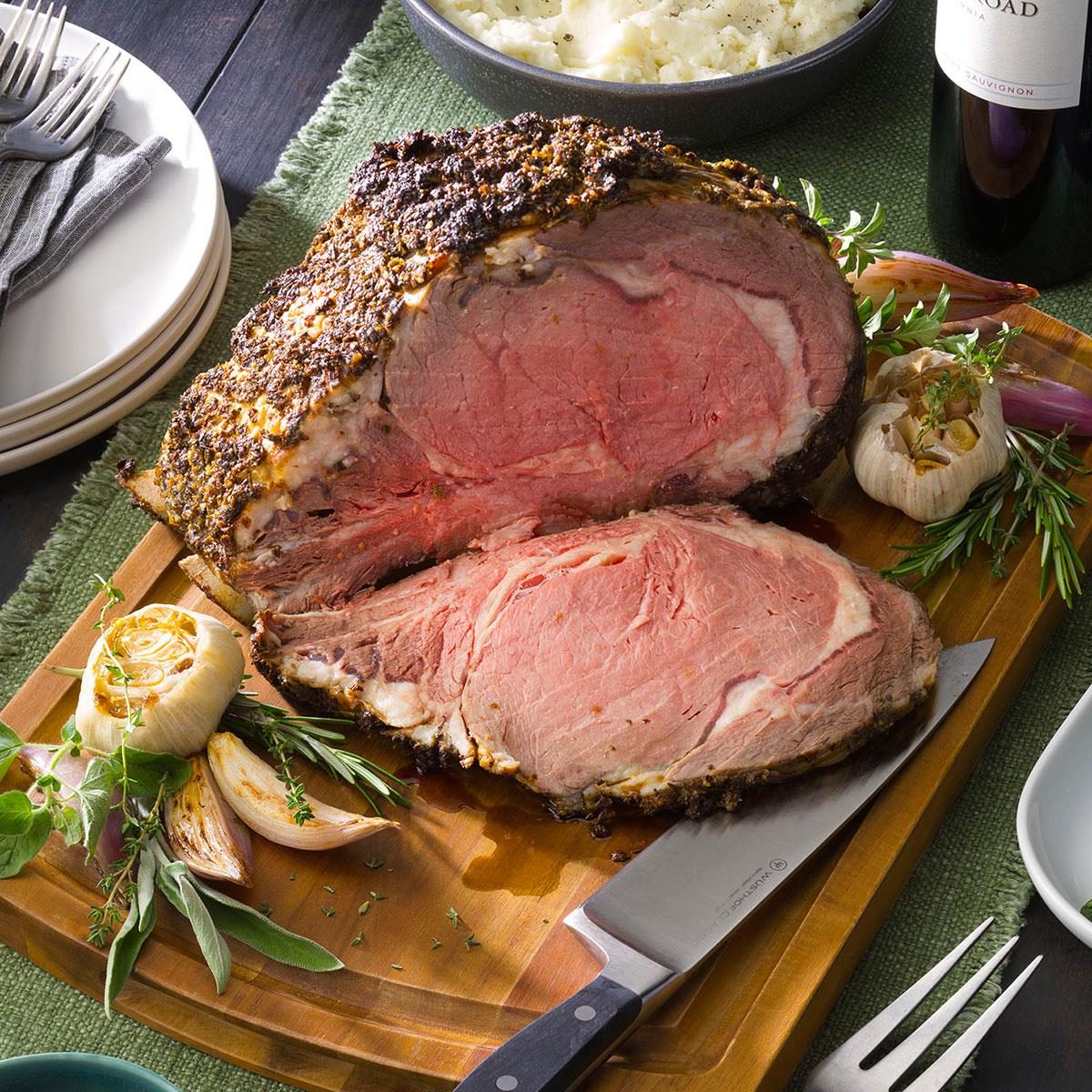
Ingredients
Export 13 ingredients for grocery delivery
Instructions
Step 1
Preheat the oven to 350°F. Place the shallot, garlic, rosemary, oregano, thyme and sage in a food processor. Pulse until finely chopped. Add the olive oil, pepper and salt. Process until the mixture turns into a paste that will easily adhere to the prime rib.
Step 2
Spread the herb paste evenly all over the roast, doing your best to cover as much surface area as possible. Transfer the roast to a rack set inside a large roasting pan. Place the prime rib to face fat side up. This will bathe the roast in its own flavorful juices as it cooks. Editor’s Tip: Let the rubbed roast sit at room temperature for 30 minutes to 1 hour before roasting. This takes the chill off the meat surface, which helps the roast brown and cook evenly.
Step 3
Bake the herb-crusted prime rib, uncovered, until it reaches the desired doneness. Depending on how you like it cooked, this will take 1 hour and 45 minutes to 2 hours and 15 minutes. Doneness Temperature Medium-Rare 135° Medium 140° Medium-Well 145° Editor's Tip: The meat's internal temperature will continue to rise as it rests, so remove the roast from the oven when it is 10° below your desired doneness.
Step 4
You may be tempted to slice right into your steamy roast, but first let it rest for at least 15 minutes. Editor's Tip: Cutting into meat too early is one of the biggest mistakes people make when cooking steak. The resting period gives the juices time to reabsorb into the meat so it stays juicy and tender.
Step 5
While the roast is resting, pour the beef broth and red wine into a small saucepan. Bring the mixture to a boil, and cook until the liquid is reduced to 1 cup. Remove the pan from heat, then whisk in the butter and salt. Editor’s Tip: Feel free to supplement some of the beef broth called for with drippings collected from the roasting pan. These pan juices are full of flavor and texture from the beef and its herb coating.
Step 6
If the bones are still attached to the roast, lift the roast onto its end, using the protruding bones as a handle. Then, glide a sharp knife along the curve of the bones, detaching them from the rest of the meat. Slice the roast to the desired thickness. Serve the herb-crusted prime rib with the prepared sauce. Editor’s Tip: When asked how to cut steak the right way, we usually recommend cutting against the grain. However, that's not necessary with prime rib. The grain can be hard to detect, and the meat is so naturally tender on its own, so it’s not something you need to worry about. You’ll end up with a juicy prime rib no matter how you cut.
Top similar recipes
Curated for youYour folders
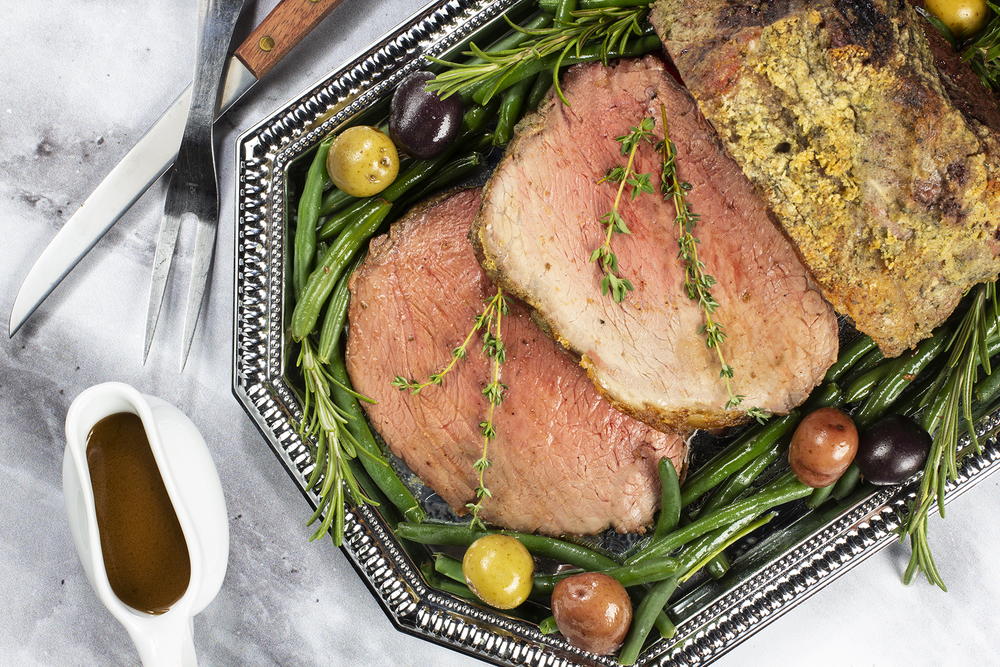
 250 views
250 viewsHerb-Crusted Prime Rib
mrfood.com
2 hours
Your folders
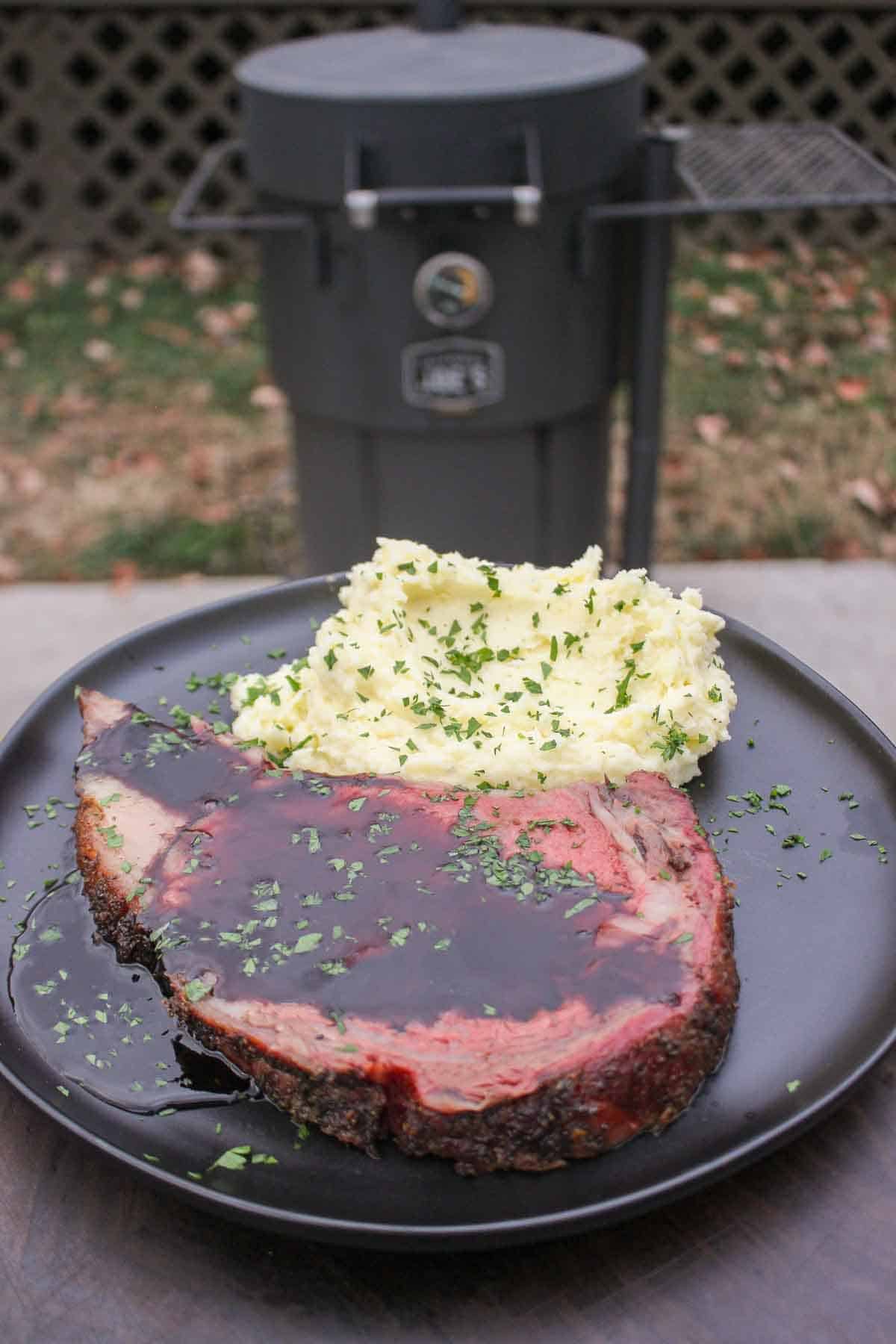
 119 views
119 viewsHerb Crusted Prime Rib
overthefirecooking.com
5.0
(3)
180 minutes
Your folders
 75 views
75 viewsHerb Crusted Prime Rib
overthefirecooking.com
Your folders
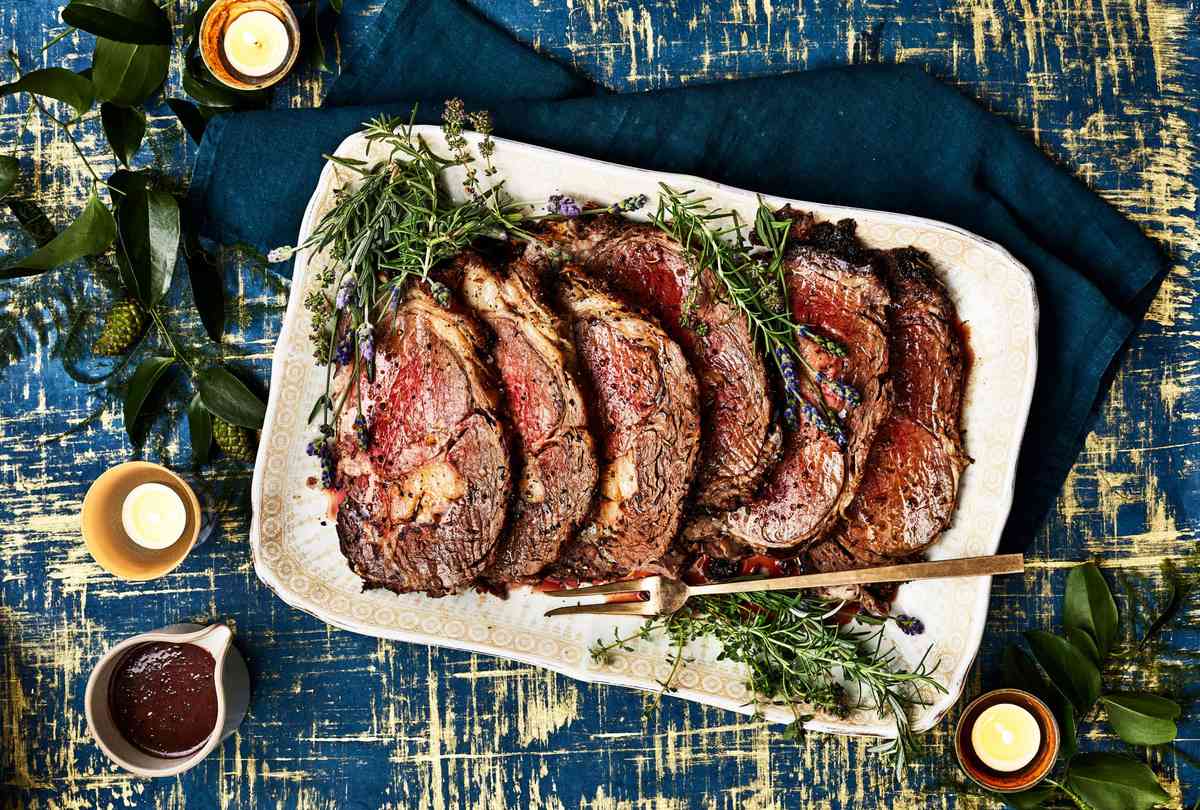
 227 views
227 viewsHerb-Crusted Prime Rib Recipe
southernliving.com
Your folders
 106 views
106 viewsHerb Crusted Prime Rib Roast
foodnetwork.com
4.6
(64)
2 hours, 30 minutes
Your folders

 372 views
372 viewsHerb-Crusted Boneless Prime Rib Roa...
thewickednoodle.com
4.5
(254)
2 hours, 30 minutes
Your folders
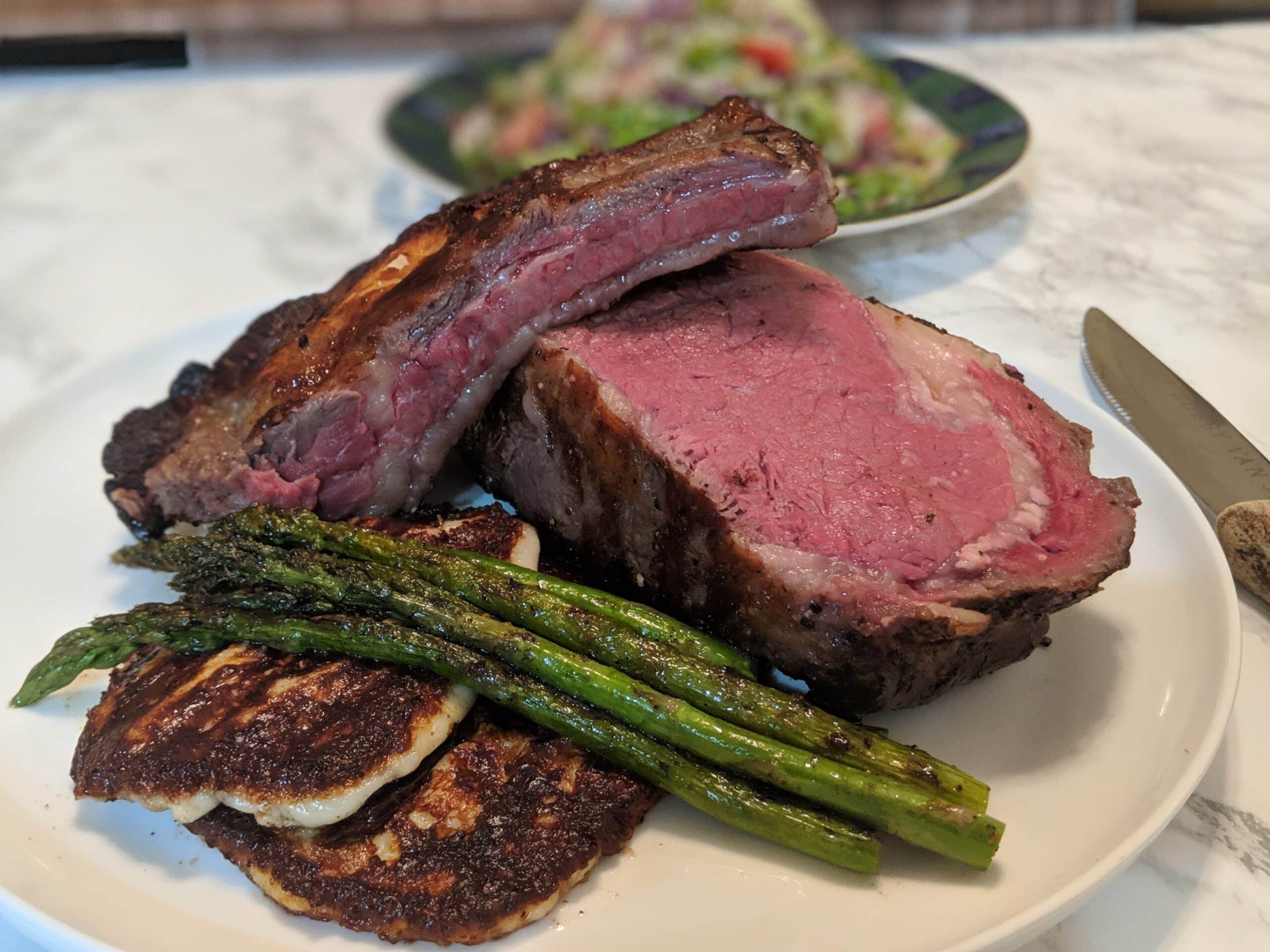
 338 views
338 viewsHorseradish Crusted Prime Rib Roast
culinarylion.com
150 minutes
Your folders
 68 views
68 viewsHorseradish Crusted Prime Rib Roast
culinarylion.com
Your folders
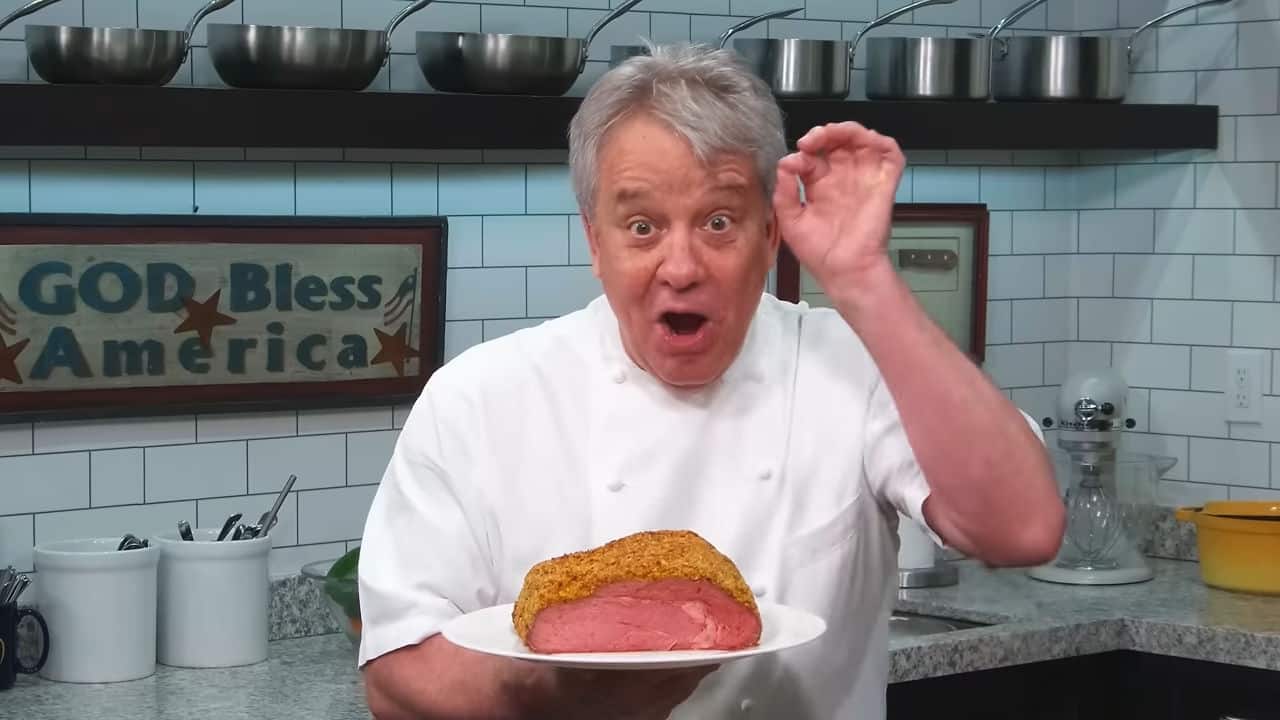
 146 views
146 viewsSundried Tomato, Horseradish Cruste...
chefjeanpierre.com
4.4
(31)
Your folders

 742 views
742 viewsPrime Rib
simplyrecipes.com
4.8
(364)
Your folders
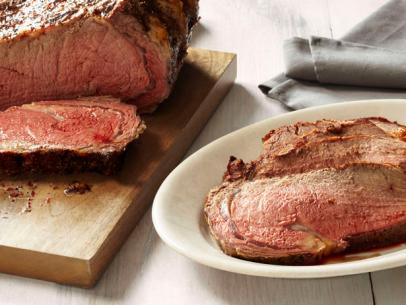
 607 views
607 viewsPrime Rib
foodnetwork.com
4.9
(25)
2 hours, 35 minutes
Your folders
 68 views
68 viewsPrime Rib
tastesbetterfromscratch.com
Your folders

 398 views
398 viewsPrime Rib
mamalovesfood.com
5.0
(2)
180 minutes
Your folders
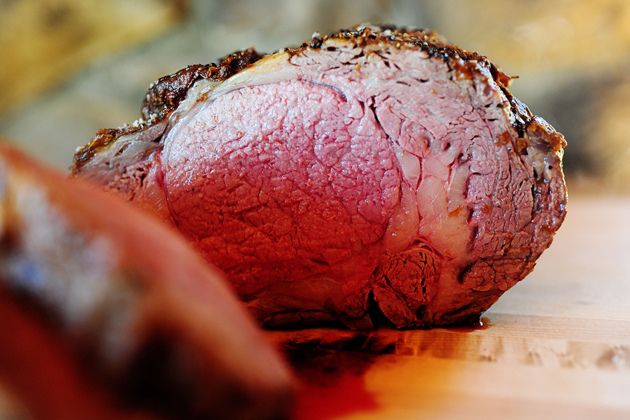
 296 views
296 viewsPrime Rib
thepioneerwoman.com
5.0
(2)
1 hours
Your folders
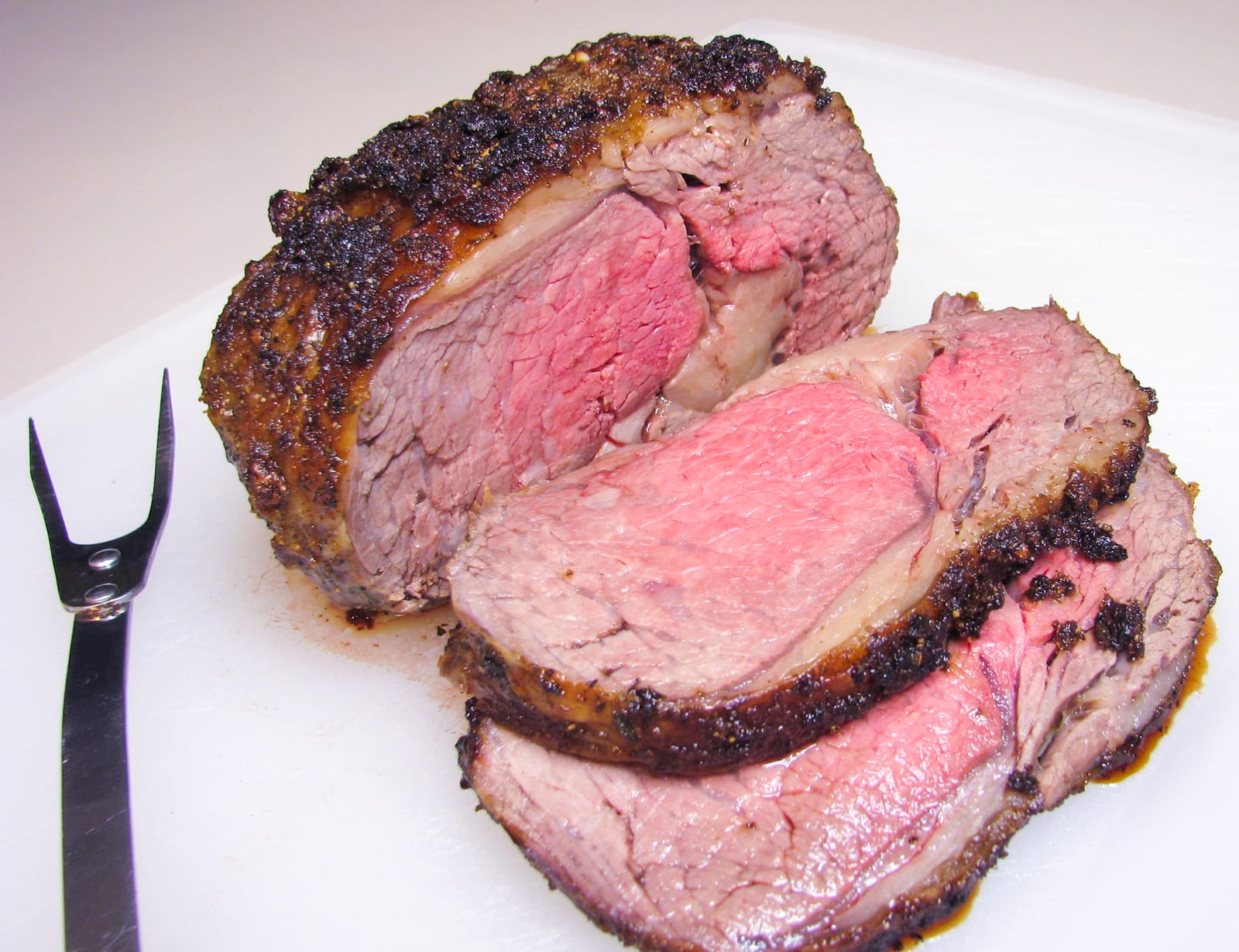
 238 views
238 viewsPrime Rib
fortheloveofcooking.net
55 minutes
Your folders
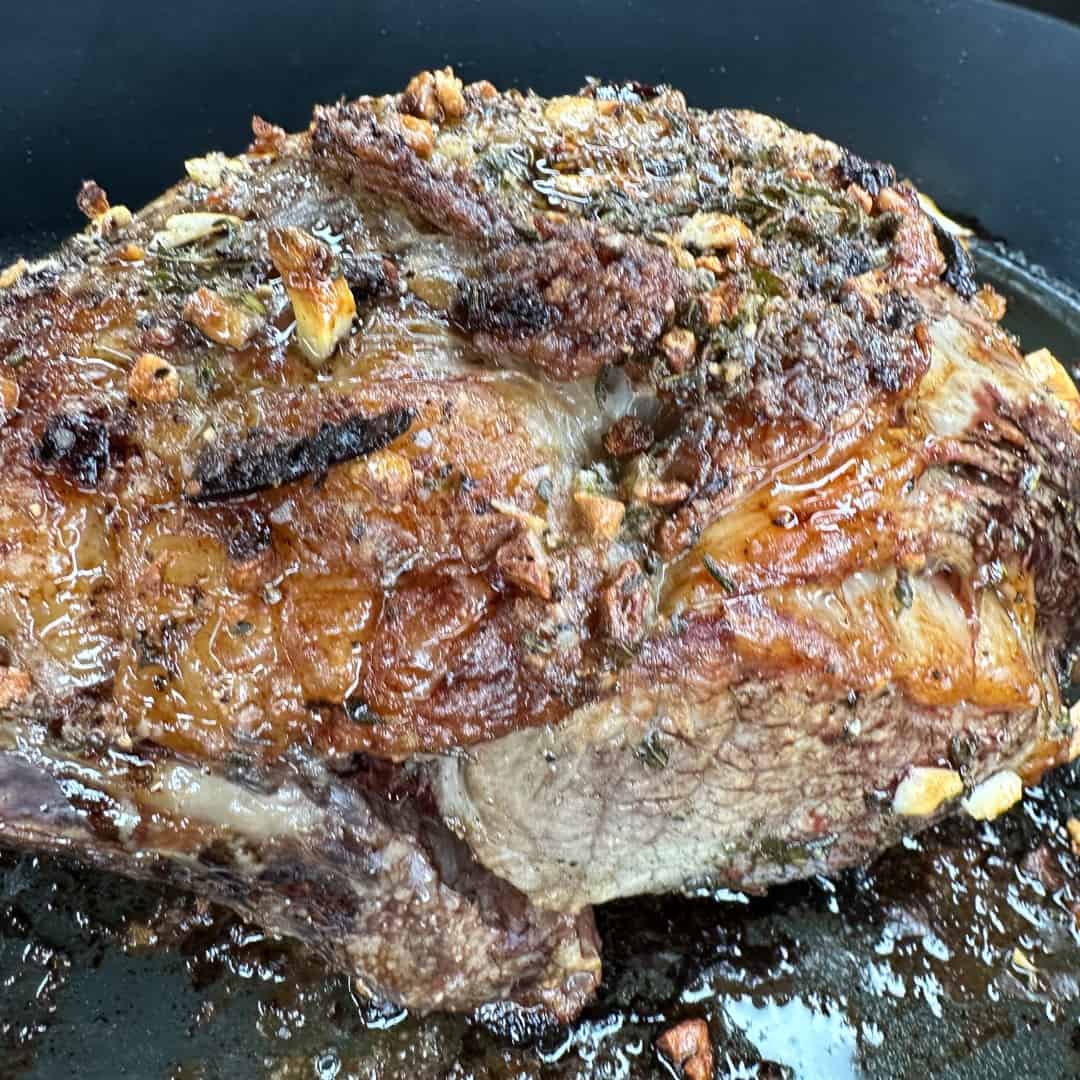
 102 views
102 viewsPrime Rib
melissajorealrecipes.com
60 minutes
Your folders
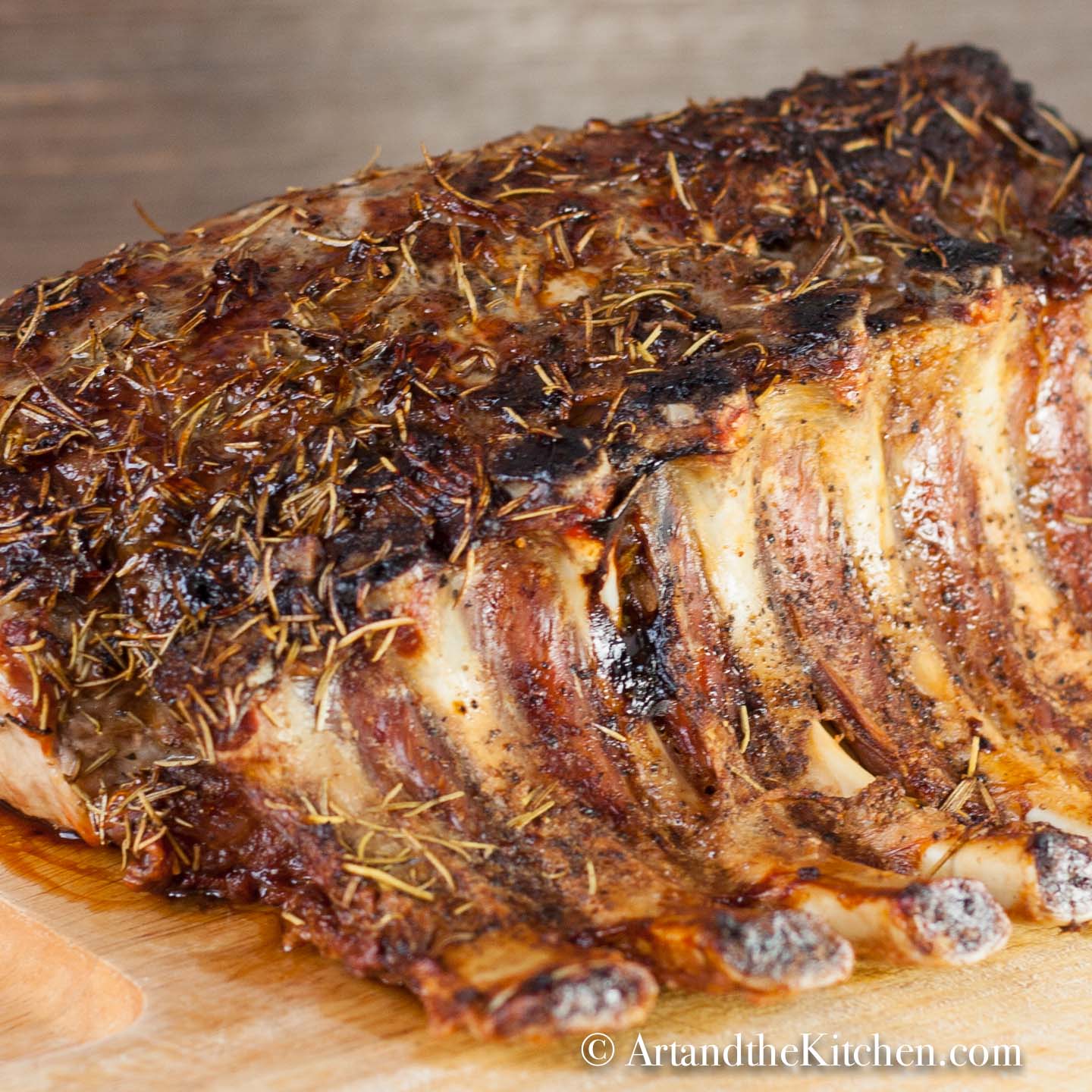
 353 views
353 viewsHerb Crusted Pork Rib Roast
artandthekitchen.com
3.7
(91)
120 minutes
Your folders

 116 views
116 viewsHerb Crusted Boneless Rib Roast
littleferrarokitchen.com
5.0
(3)
50 minutes
Your folders
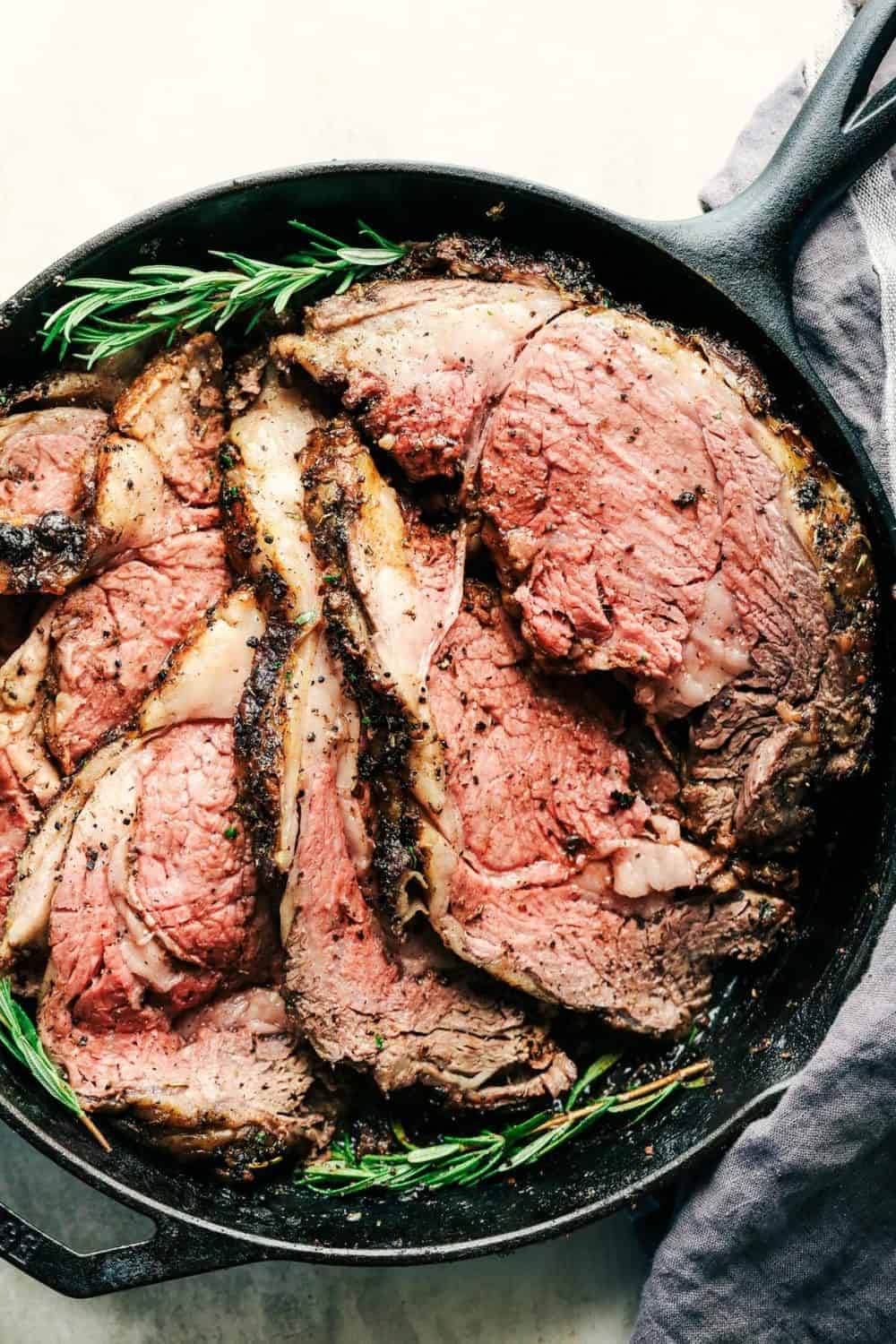
 352 views
352 viewsGarlic Butter Herb Prime Rib Recipe
therecipecritic.com
4.8
(124)
60 minutes